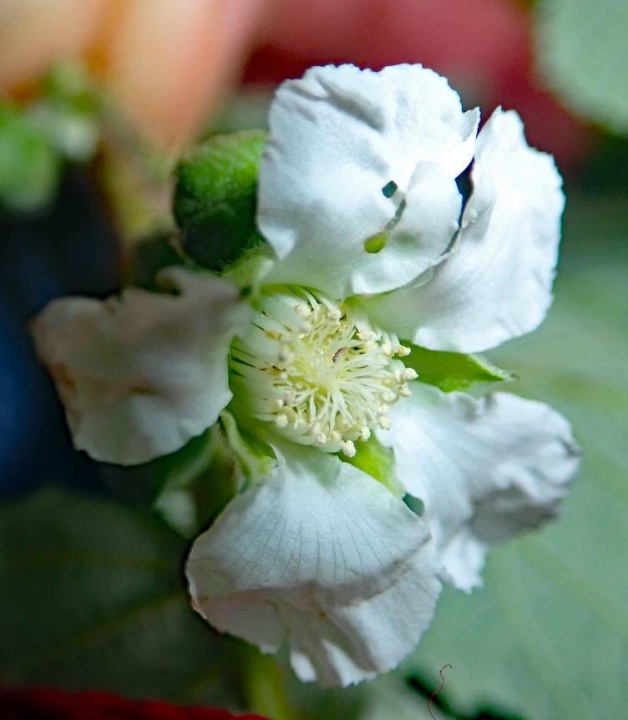First New Zealand find of Himalayan wineberry bramble
Unitec scientists discover one of the world’s worst weeds growing near Albany
First New Zealand find of
Himalayan wineberry bramble

Auckland, 11 July, 2019 – The Himalayan wineberry bramble (Rubus ellipticus) – widely regarded as one of the top 100 world’s worst weeds – has been discovered growing on a roadside near Gills Scenic Reserve in Albany; the first report of the species to be found in New Zealand.
Dr Dan Blanchon and Dr Peter de Lange from the School of Environmental and Animal Sciences at Unitec, discovered the bramble while carrying out a routine scoping inspection last week. It was found on a roadside and within private land adjoining the reserve.
The species is listed by the Plant Biosecurity Index as ‘Entry Prohibited’, meaning its introduction to New Zealand is prohibited. Although not listed as an Unwanted Organism under the Biosecurity Act, the Ministry of Primary Industries (MPI) has a watching brief, in particular to make sure that its seeds don’t enter the country.
The new discovery has been reported to MPI and they are responding.
Outside New Zealand, Himalayan wineberry is a serious problem in countries like Hawaii where it poses a threat to native communities because of its thick, impenetrable thickets. Furthermore, because the species produces stout canes it can easily grow up through the forest canopy, smothering vegetation. The berries, which are edible and taste a little like raspberries, are bird-dispersed which means occurrences can be random and difficult to detect until plants are well established.
New Zealand currently has around 30 species of bramble, five of which are endemic. Of the 25 naturalised brambles, Himalayan wineberry is most likely to be confused with Japanese wineberry (Rubus phoenicolasius) but can be distinguished by its much thicker, deeply furrowed leaves with darker green upper leaf surfaces, white flowers and pale orange-yellow flowers. Similar to the less sinister Japanese wineberry, the Himalayan wineberry has whitish-coloured leaf undersides and stems densely covered in long reddish hairs.
Dr Peter de Lange, Associate Professor, School of Environmental and Animal Sciences at Unitec, said, “This is a very significant discovery of a weed that could potentially cause considerable damage to native plant communities in New Zealand if not contained. It is difficult to detect at its early stages and equally difficult to remove once the plants are well established because of the density of the thickets it forms.”
ends


 Business Canterbury: Urges Council To Cut Costs, Not Ambition For City
Business Canterbury: Urges Council To Cut Costs, Not Ambition For City Wellington Airport: On Track For Net Zero Emissions By 2028
Wellington Airport: On Track For Net Zero Emissions By 2028 Landcare Research: ANZAC Gall Fly Release Promises Natural Solution To Weed Threat
Landcare Research: ANZAC Gall Fly Release Promises Natural Solution To Weed Threat NZ Anti-Vivisection Society: Auckland Rat Lovers Unite!
NZ Anti-Vivisection Society: Auckland Rat Lovers Unite! University of Canterbury: $1.35 Million Grant To Study Lion-like Jumping Spiders
University of Canterbury: $1.35 Million Grant To Study Lion-like Jumping Spiders Federated Farmers: Government Ends War On Farming
Federated Farmers: Government Ends War On Farming



